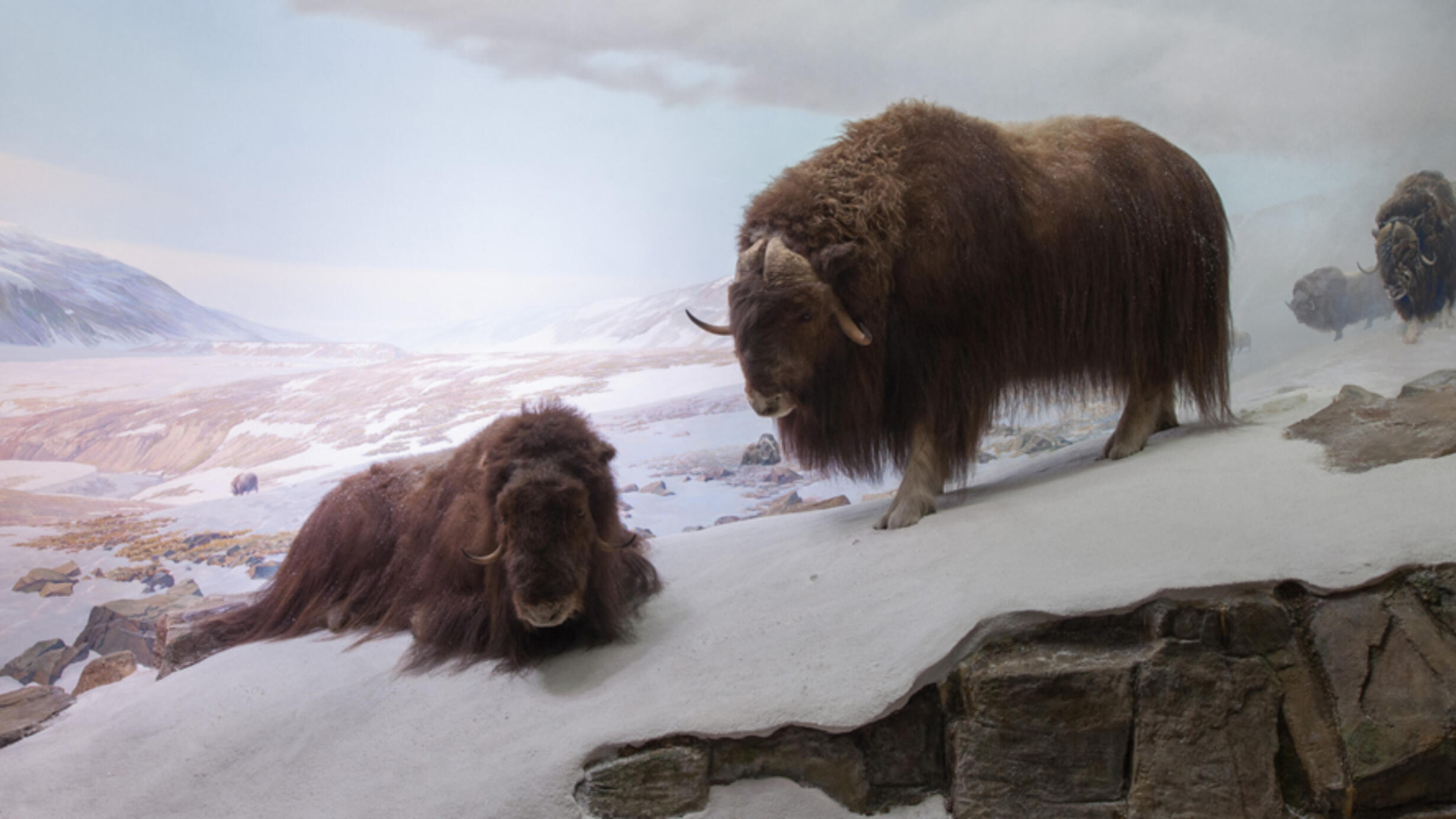Musk Ox
Part of Hall of North American Mammals.

Summer, Ellesmere Island, Canada
A herd of musk oxen hunkers down to wait out a snowstorm. When the weather gets foul, their strategy is to stay and cope. Unlike Arctic caribou, musk oxen do not migrate seasonally. Instead, their squat, woolly bodies limit heat loss, even when temperatures plunge below -40°F (- 40°C).
Extreme shifts in climate, however, can distress musk oxen. But this too is part of their survival strategy. Study of ancient DNA reveals that over many millennia, musk ox populations have undergone repeated boom and bust cycles in response to climate fluctuations. Being able to rebound after population collapses may have helped musk oxen survive the end of the Ice Age when most other large mammals, like woolly mammoths, died out.
The Bellows
Ellesmere Island, Nunavut, Canada
This valley is typical of the Canadian high Arctic—a treeless, bleak terrain known as tundra, where the ground thaws for just a month or two of summer. Only then can it support a sparse carpet of grasses, mosses and heaths, sustaining caribou and musk oxen, the largest Arctic grazers.
This ordinary Arctic landscape, however, is notable in the history of polar exploration. In the race to reach the North Pole, a British expedition first explored this valley in 1875. They named it “the Bellows” for its unrelenting winds. The team never did reach the pole.